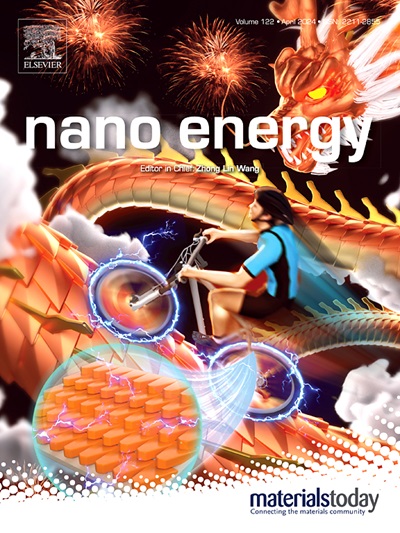Photovoltaic windows based on ultrathin transition-metal dichalcogenides: natural indoor illumination spectra and energy-saving potential
IF 16.8
1区 材料科学
Q1 CHEMISTRY, PHYSICAL
引用次数: 0
Abstract
Semitransparent photovoltaic windows are attractive for building-integrated applications because they can regulate natural indoor illumination while generating power. In this work, we assess the potential of transition metal dichalcogenide (TMDC) semitransparent solar cells as emerging technology for this application. We model a semitransparent ultrathin photovoltaic device containing a MoS2 or WSe2 absorber and find that it can be optimized to produce a balanced absorption of the sunlight spectrum because of the unique optical properties of these materials, eliminating the common problem of the undesired coloring of the transmitted light. The device also exhibits high angular absorptance. We estimate a potential saving between 16% (winter) and 23% (summer) in the electricity consumption of a high-rise office building located in Madrid, Spain, by implementing TMDCs semitransparent windows with an average photopic transmission (APT) of 24%. Notably, this is compatible with a high quality in the transmitted light: the color rendering index (CRI) of the PV windows exceeds 90 for an APT between 23% and 65%. These results, along with the fact that TMDCs can be deposited using low-cost, scalable methods, indicate that TMDCs hold great potential for developing color-neutral, power-generating building glazing.

基于超薄过渡金属二卤化物的光伏窗:自然室内照明光谱和节能潜力
半透明光伏窗可以在发电的同时调节室内自然光照度,因此对建筑一体化应用具有吸引力。在这项工作中,我们评估了过渡金属二卤化物(TMDC)半透明太阳能电池作为新兴技术在这一应用中的潜力。我们对含有 MoS2 或 WSe2 吸收体的半透明超薄光伏器件进行了建模,发现由于这些材料具有独特的光学特性,因此可以对其进行优化,以产生对太阳光谱的均衡吸收,从而消除透射光不希望着色的常见问题。该装置还具有很高的角吸收率。我们估计,在西班牙马德里的一栋高层办公楼中,采用平均光透射率(APT)为 24% 的 TMDC 半透明窗户,可以节省 16% (冬季)到 23% (夏季)的用电量。值得注意的是,这与高质量的透光率是一致的:当 APT 在 23% 至 65% 之间时,光伏窗的显色指数(CRI)超过 90。这些结果以及使用低成本、可扩展的方法沉积 TMDC 的事实表明,TMDC 在开发色彩中性的发电建筑玻璃方面具有巨大潜力。
本文章由计算机程序翻译,如有差异,请以英文原文为准。
求助全文
约1分钟内获得全文
求助全文
来源期刊

Nano Energy
CHEMISTRY, PHYSICAL-NANOSCIENCE & NANOTECHNOLOGY
CiteScore
30.30
自引率
7.40%
发文量
1207
审稿时长
23 days
期刊介绍:
Nano Energy is a multidisciplinary, rapid-publication forum of original peer-reviewed contributions on the science and engineering of nanomaterials and nanodevices used in all forms of energy harvesting, conversion, storage, utilization and policy. Through its mixture of articles, reviews, communications, research news, and information on key developments, Nano Energy provides a comprehensive coverage of this exciting and dynamic field which joins nanoscience and nanotechnology with energy science. The journal is relevant to all those who are interested in nanomaterials solutions to the energy problem.
Nano Energy publishes original experimental and theoretical research on all aspects of energy-related research which utilizes nanomaterials and nanotechnology. Manuscripts of four types are considered: review articles which inform readers of the latest research and advances in energy science; rapid communications which feature exciting research breakthroughs in the field; full-length articles which report comprehensive research developments; and news and opinions which comment on topical issues or express views on the developments in related fields.
 求助内容:
求助内容: 应助结果提醒方式:
应助结果提醒方式:


